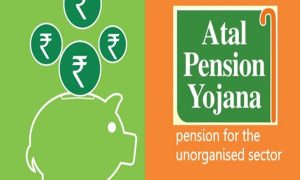Tax breaks related to retirement benefit schemes such as Provident Fund (PF) and payments from Voluntary Retirement Schemes (VRS) have been retained, while deductions on yearly spends commonly claimed by salaried people — such as Leave Travel Allowance (LTA) and House Rent Allowance (HRA) — will no longer be available to those who opt for the new income tax structure unveiled by the government for the next financial year.
The list of exemptions that will be carried over to the new scheme includes 50 items from the close to 120 exemptions available to those who pay tax through the old system. HT has reviewed the list.
“Broadly, the exemptions that would remain available [even under the new taxation system] will pertain to matters related to retirement, for example gratuity, money from VRS. The old system, will, however, continue as it is,” Central Board of Direct Taxes (CBDT) chairperson Pramod Chandra Mody told HT on Monday, adding that taxpayers can remain on the old system if they want to avail the existing tax breaks.
The new scheme aims to leave people with more cash to spend, Union finance minister Nirmala Sitharaman said on Saturday while presenting the government’s budget for the 2020-21 financial year in Parliament. The new simplified system, she added, can leave a person with a salary of Rs 15 lakh with up to Rs 78,000 more per year.
“A taxpayer is smart enough, intelligent enough, responsible enough to take a call on how much he wants to spend or save. We should trust him to that extent,” the minister said in an interview later, when asked if the optional new structure will take away the incentive for people to save.
According to experts, many of the tax breaks that have been dropped are connected to annual salary — as compared to savings for retirement or pension payments.
“The taxpayer claiming this new regime will not be eligible to claim a host of deductions available under the current regime, such as housing rental allowance, leave travel allowance, interest on house property, certain deductions in relation to salary, etc,” Cyril Amarchand Mangaldas said in a report released on Monday. The proposal to give an option to income tax assessees is similar to the option provided to domestic corporate taxpayers. In order to boost investments, the government in September drastically reduced tax rates — from 30% to 22% — for businesses provided that they forgo deductions. The cut is estimated to have left companies with an additional Rs 1.45 lakh crore in all.
Similarly, the reduced personal tax slab is likely to leave taxpayers with Rs 40,000 crore in all, Sitharaman said on Saturday.
Some of the exemptions included in the list of 50 are VRS payments up to Rs 5 lakh, bonus received under a life insurance policy (subject to certain conditions), interest on GPF and PPF; payment received from new pension scheme (NPS) on its withdrawal or closure, and scholarships granted to meet the cost of education.
Experts said the new structure needs more scrutiny. “Compensation structures will need to be evaluated in light of the proposed regime. Integration with payroll systems will also be a top to-do for companies now,” said Surabhi Marwah, tax partner, EY India.
Amit Singhania, partner, Shardul Amarchand Mangaldas and Co, said, “The Union Budget 2020 did mention phasing out many of the exemptions and deduction but not in entirety. The exemption and deduction which will be continued mostly pertains to specific schemes or circumstances.”
“The Government had spelled out its intention to phase out all the exemptions and deduction and eventually lower the tax rate to 25% and further. Considering that corporate tax rate of 25% has already been achieved, the government may contemplate a further cut with deletion of all the exemptions as soon as they get some fiscal space to do so,” he added.
Sitharaman had in the interview on Saturday said that exemptions will be reduced further, but the government will then be able to give “a more attractive rate”.




































